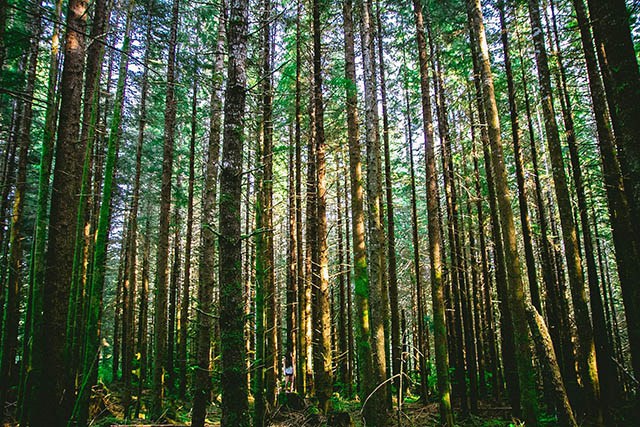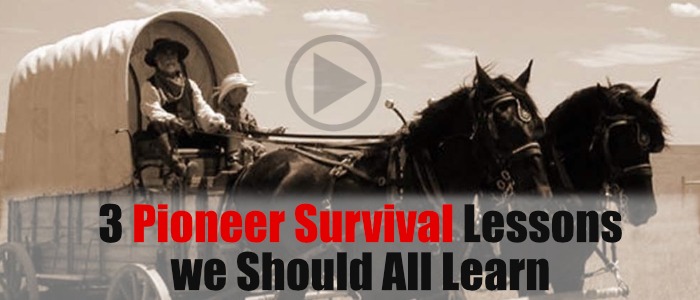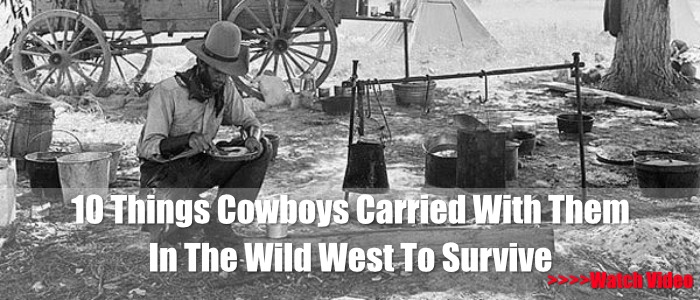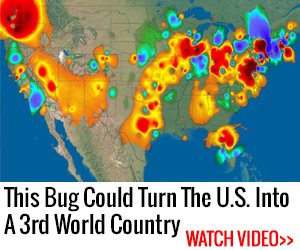
I do hunt, and I do fish, and I don’t apologize to anybody for hunting and fishing.
I went hunting for the first time this year. I have been waiting for deer season to open up in my neck of the woods and finally got my chance to get out there and try my luck at bringing home some meat to fill my family’s freezer. The weather didn’t want to cooperate, never does really, but regardless of the conditions not being ideal to the deer hunting experts, I decided to trudge out to the stand anyway and see what I could get.
Over the course of the next few days I had several experiences that seemed designed to humble me first and to point back to the often discussed scenario of bugging out into the woods, which reinforced for me anyway how this might not be as great of an idea after TEOTWAWKI as you hope. For those of you who plan on grabbing your overly equipped bug out bag when the next crisis or SHTF event happens and walking into the forest, let me share a couple of lessons learned while hunting that happened to me.
Your pack is heavy and noisy
Starting out, I needed to refill my feeders. Where I live it is legal to bait deer and this is usually done by putting corn in feeders that the deer can nibble on whenever they like. This gets them in the habit of coming to your location repeatedly. You can optionally hook up a good game camera and see who is visiting your feeders. For me, at this stand the only things I caught on the camera were raccoons who I am sure appreciated the free meals.
I had been filling my feeder up for a few weeks before hunting season began and wanted to top it off. This involves me walking with a 50 pound sack of deer corn approximately 1 mile into the woods next to my stand. I accomplish this by putting the bag in an old Army Alice pack I have because the large middle compartment holds the heavy bag nicely.
The Alice pack itself is actually pretty light and this was my very first bug out bag due to the cost. You can find military surplus packs on E-Bay for around $60. Rothco makes a new knock off of the bag that will set you back closer to $95 on Amazon. When I filled my pack up the first time with all my gear and took it for a hike I immediately started to rethink my bug out bag, but for hiking the occasional bag of deer corn down the trail it is perfect.
What I remembered again after walking with it is that 50 pounds is not light but that isn’t as heavy of an amount many preppers plan on hauling. On top of that, the pack itself squeaks when I walk. The pad that goes on your lower back rubs against you with that weight and makes a squeaking sound. Almost like someone with cheap shoe inserts or a mild but persistent case of gas. Granted, the noise probably wasn’t so loud that I would alert anyone further than several hundred feet but it was a consideration with the Alice pack.
When you bug out into the woods, you will likely want to keep as low of a profile as humanly possible and the last things you need are to be encumbered by so much weight that you can’t exit the area quickly or worse, making farting sounds as you run off through the woods with your cheap military surplus pack.
Lesson Learned: Don’t put too much gear in your pack that carrying it is a burden. Sound check your pack by using it on a real world hiking trip. Does it make noise or are you silent but deadly? Sorry, couldn’t resist.
You aren’t guaranteed that big game you plan on eating
This next lesson is very embarrassing to relate but for the sake of sharing information I will. I had an opportunity to shoot deer the other day. Two actually, but I didn’t bring home any meat. How is that possible?
I had just sighted my rifle in so I was pretty confident with zero, but there were two other factors that I think worked against me. Both issues in retrospect were completely my fault. I shot the first deer after three walked into my clearing. This deer didn’t fall; she walked around and eventually lay down. I thought OK, I hit her but it must not have been a good shot placement. I assumed she would die relatively quickly and didn’t go down to dispatch her humanely because there were still two other deer down there.
I took a second shot (yes the other two deer stood there while I reloaded my muzzle loader) and the same thing happened. The deer ran just a few feet, but didn’t fall, just walked around for a while and eventually took to lying down. By now I am thinking I am the worst shot in the world but soon another buck came in and ran them all off.
I climbed down and found two blood trails proving that I did hit them both, but obviously not well. I followed the first trail until it ended. I looked around for a long time but couldn’t find where it went. The second trail I followed led me to the deer lying in a creek bed. I had shot it exactly behind the front leg but just a few inches too low missing the heart. I pulled my pistol to finish it quickly but the deer was lying on large rocks which I was afraid my shot would ricochet. Thinking the deer was too weak to move, I grabbed it by its legs and pulled it onto the bank where the ground was better suited for a backstop or so I thought. When this happened, the deer jumped up, bolted out of the creek and ran off through a thicket like its butt was on fire. I never picked up another blood trail or found it again.

Dense woods seem to provide cover, but they also conceal others too.
I was shooting a black powder rifle and had shot this maybe half a dozen times the weekend previous. I put the rifle away without cleaning it because I thought I would just be using it again to hunt in a couple of days and a thorough cleaning could wait. I remember loading the rifle and not being able to seat my round down as far as I thought it should go. It seemed to stop though and I guessed I must be imagining things. Later I learned that my powder and sabot were about 6 inches higher up the barrel from where they should be. This most likely impacted the velocity of the round as my shot hit lower than needed to cleanly kill the animal humanely.
Now, you can say I should have performed better maintenance on my weapon and that is certainly true. You can also say I should have practiced shooting more to be a better shot and of course that is also true, but here is just one example of how I missed what I was shooting at and what could have been dinner, disappeared forever. It can happen to anyone. Even if my weapon was clean and I hit a better shot, deer can still run off and you might not be able to find them no matter how hard you look.
Lesson Learned: Cleaning my weapon might not have been the culprit but I am sure it didn’t help. Make sure you have the supplies you need to clean your weapons and the discipline to clean them after every trip to the range. More so if you know you will be shooting them again and accuracy is important. Accuracy is always important.
Noise travels far
Another lesson is that noise travels pretty far in the woods. As I wait for deer to magically appear in front of me, I hear shots all around me at various intervals. I know that the shots are more than a mile away at least, but if you were trying to keep a low profile, shooting a rifle could easily draw someone to your location.
In addition to gunshots, we hear cars, trains, chain saws, squirrels and just about anything for at least a mile out there in the woods as I sit quietly in a tree. The leaves render almost any movement impossible without creating a lot of noise. If you were in a similar situation, noise discipline would be important and still hard to maintain perfectly. Other environments like the desert or mountains that have less leafy foliage would be easier to contain noise at least when you are walking, but you still have that as a consideration.
The further you go away from civilization, the less likely you are to hear the ambient noises I do, but you are still able to pick up sounds around you. The less noise you have surrounding you the more you will hear.
Lesson Learned: I am not going to be able to sneak my family through the woods without being detected most likely.
You might not be as hidden as you think
My deer stand isn’t camouflaged. It is a ladder stand that sits up against a big poplar in woods that are reasonably thick with other trees. When I got down to follow the blood trail the first time, I left my daughter in the tree. I walked around for probably 20 minutes looking for tracks and got probably 500 yards away from her at the furthest point.
The further I got away from her, the harder she was to see. I know right were my stand is, but the cover of the forest made it very hard to make her out and eventually I couldn’t see her at all. She could see me though and watched me through the binoculars until I went over a ridge. She also saw (and heard) me coming all of the way back in and I didn’t see her until I got close enough that she could have hit me with a rock.
The same thing happened with deer. When I saw one approaching I would let her know but she wouldn’t see them until I pointed them out. Movement is what alerted me to their presence well before they ever made a sound. Just by sitting quietly and watching, I could see movement when it came into my field of view. Even the quietest person in the world will need to move and it is when they do that you can be spotted.
Lesson Learned: The saying can’t see the forest through the trees is applicable here. I couldn’t see one object because of the dense forest. Heavy wood cover can work for you and against you. Someone can spot you much faster than you can see them if they are moving and you are still.
That’s been my experience in the woods so far this week embarrassing as it is. Do you have any lessons for people who plan to bug out into the woods?
On a different note, here’s some other self-sufficiency and preparedness solutions recommended for you:
The Lost Ways (The vital self-sufficiency lessons our great grand-fathers left us)
Survival MD (Knowledge to survive any medical crisis situation)
Backyard Liberty (Liberal’s hidden agenda: more than just your guns…)
Alive After the Fall (Build yourself the only unlimited water source you’ll ever need)
The Lost ways II (4 Important Forgotten Skills used by our Ancestors that can help you in any crisis)
The Patriot Privacy Kit (Secure your privacy in just 10 simple steps)























